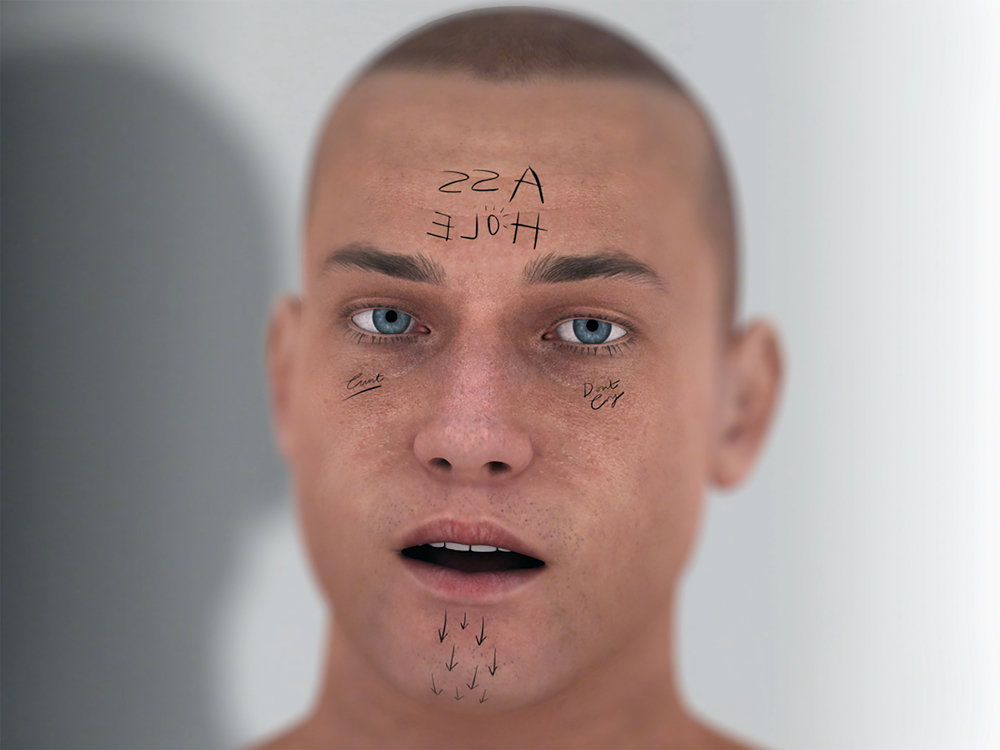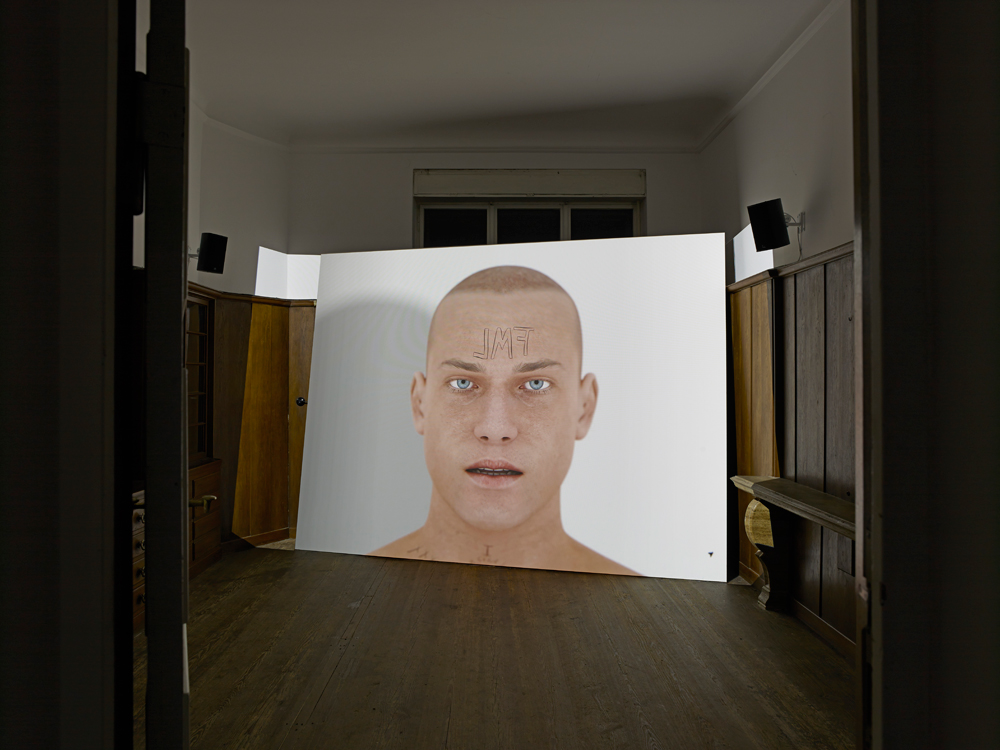The Altergorithm
The difference between ‘what if’ and ‘as if’ scenarios, and what contemporary art has to do with it
The difference between ‘what if’ and ‘as if’ scenarios, and what contemporary art has to do with it

The ‘altergorithm’ takes its name from the words ‘alternative’, the possibility of a state of affairs that is different from the one at hand, and ‘algorithm’, a set of rules defining a sequence of operations. Algorithms are found in mathematics, coding, risk assessment and, above all, economic speculation. I use the term ‘altergorithm’ to refer to practices that envisage alternative, often impossible scenarios through algorithmic modelling, or, algorithms that challenge natural laws of probability.
I see the altergorithm as a reaction to two overlapping conditions. The first is an environment that spins, ecologically, economically and politically, beyond our control. Philosopher Robin van den Akker and I have elsewhere described this condition as the return of ‘History with a capital H’, but the increasingly popular ‘Anthropocene’ – a term first proposed by Paul J. Crutzen and Eugene F. Stoermer in 2000 – or, more recently, ‘Capitolocene’ – Jason W. Moore’s term, coined in 2014, for the correlation between our ecological state and the capitalist condition – may be just as appropriate labels, and perhaps even more fitting.

The second condition the the term altergorithm responds to is what Ulrich Beck, in 1992, described as the ‘risk society’ and what Ted Striphas has more recently simply called ‘algorithmic culture’: modern culture’s tendency to use algorithms, codes and simulations to predict and pre-empt the possible outcomes of existing processes. A trainee pilot, for instance, might use a flight simulator to test his ability to respond to possible weather changes or technological malfunctions; an investment banker might develop an algorithm to speculate on the price of a stock; an insurance company uses algorithms to calculate the likelihood of accidents, illnesses and deaths and during the first Gulf War, as Jean Baudrillard argued in 1995, the US army calculated all of the above scenarios in a war game scripted to the last comma.
What the altergorithm responds to is the extent to which the first condition, of an environment spinning beyond our control, outruns our attempts to predict risks and eventualities.

An altergorithm maps an actual future from a virtual present, as opposed to the algorithm, which charts virtual futures within the parameters of an actual present. The altergorithm is the name for the practice, in art or elsewhere, that uses algorithms, codes or simulations to develop scenarios that probably won’t or simply cannot happen. It pertains to art works that plot unlikely trajectories from uncertain and unstable points of departure. To put it in other words: while the risk society’s algorithm poses a ‘what if’ question, the altergorithm posits an ‘as if’ statement.
As the early 20th century renegade philosopher Hans Vaihinger argued in his book Die Philosophie des Als Ob (The Philosophy of ‘As if’, 1911), the conjuncture ‘as if’ is an analogy (‘as’) with a conditional (‘if’). It is an equation in which not only the variables change, but also the constants. If you treat one scenario as if it were another, regardless of the relation one has to the other, you open up the terms of the debate. The Dutch artist Jonas Staal, for instance, by discussing politics as if it were art, raises entirely new questions and alternate answers. Many of these discussions will, when translated back to politics, make no sense, but some might help to rethink what politics is and can be.

The risk society’s ‘what if’ questions, in contrast, limits possibilities down to the most plausible outcomes. As Shell’s scenario planning division explains on their website:
Shell Scenarios ask ‘what if?’ questions to explore alternative views of the future and create plausible stories around them. They consider long-term trends in economics, energy supply and demand, geopolitical shifts and social change, as well as the motivating factors that drive change. In doing so, they help build visions of the future.
‘What if?’ questions, in other words, calculate all possible routes one might take from his or her present position. ‘What happens’, they ask, ‘when you go left here, and right there, and left, another left, and then right? Where does this road lead?’ While the algorithm asks which scenarios will take place, and is interested exclusively in those that can take place, the trope of the altergorithm acts as if a scenario could take place even, or especially if, it could not. The point of the altergorithm, indeed, seems less to predict the future, than to extend the possibilities of the present. As you might expect from a digital code, the altergorithm’s ‘as if’ statement often spells out an alter- or non-human present (see Rosi Braidotti’s recent study on the subject in The Posthuman, published by Polity in 2013, for an incisive consideration of the nature of this present).

Unsurprisingly, the trope of the altergorithm is particularly pervasive in contemporary art relating in one way or another – logically, aesthetically, and in terms of its modes of production, distribution or consumption – to the internet and its effects on contemporary culture. Indeed, in thinking about the altergorithm, I am thinking above all of projects by artists such as, amongst many others, Lawrence Abu Hamdan, Ed Atkins, Ian Cheng, Aleksandra Domanović, Oliver Laric, Mark Leckey, Katja Novitskova, Timur Si-Qin, and Wu Tsang.
In Ed Atkins’s video performances, for example, a digital avatar modelled after the artist delivers monologues – Atkins’s recorded voice – on the meaning of life. In contrast to the avatars of role-playing games, however, here Atkins’ avatar is not a double enacting an organic counterpart’s, as much as an inadequate placeholder for the artist’s incoherent subconscious, lost from its proper locus: the human body. The avatar is, alternately (and at times, all at once), a hybrid, a body without genitals, disembodied, a head isolated in the dark, a head shrinking, a head deflating like a hot air balloon. Talking from a digital realm to everyone and to no one in particular, Atkins’s avatars intersperse incoherent ramblings with grand theories, casual smoking with heartfelt declarations of love and even, in his 2014 installation in the Serpentine Gallery in London, Ribbons (2014), intensely performed songs by Randy Newman and Johann Sebastian Bach. The simulation here does not present a scenario of a possible future, but a post-human stream of consciousness of the present that raises questions about both the sustainability of that present and the possibility of any one future story at all.

Ian Cheng’s ongoing live simulation Entropy Wrangler (2013) also envisages a post-human digital stream of consciousness. Yet where for Atkins ‘post-human’ means a situation that is alter-human, Cheng literally imagines a past-human plot, one where no humans interfere with the action. Cheng has developed an algorithm that replicates unpredictably. The point of departure is a virtual display of an undefined space filled with a chair, a ball, a stick figure and some other objects. But at the press of a button, the objects begin to evolve, differently each time, sometimes moving into each other, sometimes away, cracking the chair, now breaking the figure, and so on. The randomizing algorithm takes into account some laws of nature, but not all, causing scenarios which are decidedly improbable and seemingly illogical, at least from a human(ist) point of view. What Cheng’s algorithm achieves is a process that supersedes human rationality. Independent from human interference, it in turn can be used to inform human creative capabilities.
What these, admittedly isolated, examples of Atkins and Cheng show is a desire to produce models that relate to the possibility of a world that develops differently with, or even independently from, human interaction; a desire to utilize technocratic models of prediction to envisage these alternative, prediction-defying scenarios. The point here seems less a plea for a world without humans, but a world where humans are able to consider options other than the ones stemming from their own localized, embodied brains, options that may well support those humans’ opportunities for survival. In this sense, I guess, the altergorithm in the arts does not have to look far for its philosophical counterparts: new materialism, speculative realism, object-oriented ontology.
A version of this text will be included in Rosi Braidotti & Maria Hlavajova (eds.), Posthuman Glossary, published later this year.























